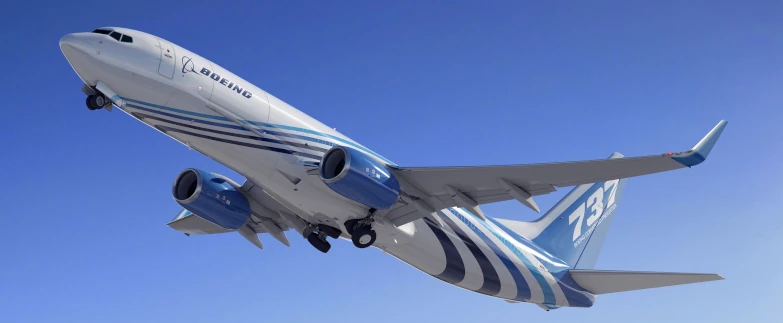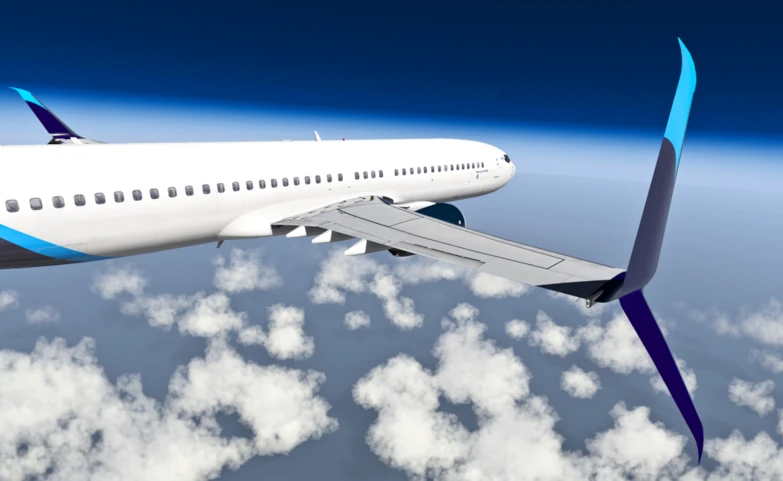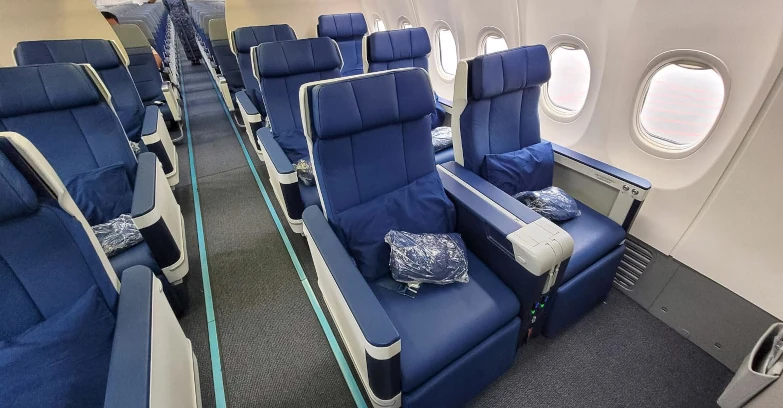
Boeing 737-800 Seat Map and Details
Introduction to the Boeing 737-800
In the mid-1990s, engineers of the American company Boeing worked on the model of a twin-engine medium-range narrow-body 737-800 (first called 737-400X). The model is part of the manufacturer’s new Next Generation range.
The Boeing 737 800 is a passenger aircraft designed for air transport on medium-haul routes. The third-generation Boeing 737NG series replaced the outdated Boeing Classic aircraft. The development of the series with improved flight characteristics and enlarged passenger cabin began in 1993. The first Boeing 737-800 aircraft entered flight tests in 1997. The first customer of the new model was Hapag-Lloyd Flug Airlines. The efficiency and reliability of the Boeing 737-800 led to a mass order of the model by all major air carriers.
With a length of almost 40 metres, the Boeing 738 is capable of carrying up to 189 passengers (in economy class with a dense interior layout). With two classes on board, this figure drops to 162 people (the maximum take-off weight of the aircraft reaches almost 79 tonnes). With a ceiling of 12 and a half kilometres, it can carry all of them over a distance of almost 5,400 kilometres.
The turbofan engines of the 737 800 create a powerful thrust, and together with its 34.31 metre wingspan (with an area of almost 124 square metres), this is enough to reach a maximum speed of 970 km/h.
On board, pilots are assisted by a modern digital equipment complex built similarly to the Boeing 777 avionics, with colour multifunctional monitors and the possibility of displaying important flight information on the cockpit windscreen.
Boeing 737-800 Modifications
The Boeing 737-800 series encompasses several modifications, including the Boeing 737-8AS, Boeing 737-8K5, and Boeing 737-8MG.
Design Features of the Boeing 737 800
From the beginning, Boeing has strived to combine power and performance, and what a success! The Boeing 737-800 can seat up to 189 passengers in a single-class configuration for optimum utilisation of on-board space.
The CFM56-7B engines installed in the Boeing 738 represent the pinnacle of technical excellence and reliability. They provide not only power but also economical fuel consumption, making this aircraft more efficient and environmentally friendly.
The digital cockpit incorporates advanced technology, making the aircraft more efficient and safer to operate for the crew and passengers. With advanced navigation and automation systems, pilots can respond quickly to changing flight conditions, ensuring a more comfortable and safe journey.
Improved winglets on the Boeing 737 800 significantly reduce air resistance, resulting in increased fuel economy and improved aircraft performance. This innovation helps reduce operating costs and environmental impact.

In terms of innovation, the 737-800 has truly pushed the boundaries in aviation, providing high performance and enhanced comfort for travellers. Its technical features and technological solutions make it one of the most sought-after and reliable aircraft in the world.
Differing from its forerunners, this aircraft boasts an elongated fuselage capable of accommodating a larger number of passengers. Enhanced with a redesigned wing featuring upward-sloping winglets, it minimizes drag and enhances fuel efficiency. Propelled by CFM56-7 engines, it boasts improved thrust and overall performance. Its revamped, spacious cabin can be customized to suit various seating arrangements, ensuring optimal passenger comfort. Furthermore, this model is equipped with updated avionics and systems. Serving as a reliable workhorse for short- to medium-haul flights, the 737 800 strikes a fine balance between operational effectiveness, versatility, and passenger-oriented design.
Technical Specifications Boeing 737-800
Weight
| Empty Weight | 41480 kg |
| Max Takeoff Weight | 79016 kg |
| Max Landing Weight | 66361 kg |
Flight Data
| Range | 7408 km |
| Cruising Speed | 936 km/h |
| Max Speed | 978 km/h |
| Takeoff Distance | 2241 m |
| Landing Distance | 1634 m |
| Engines | 2 × CFM International CFM56-7B24 |
| Engine Thrust | 2 × 107 kN |
| Max Fuel Capacity | 26035 L |
| Max Altitude | 12500 m |
Passenger Cabin
| Crew | 2 pilots |
| Passenger Capacity | 189 |

Dimensions
| Length | 39.50 m |
| Height | 12.60 m |
| Wingspan | 34.32 m |
| Wing Area | 124.58 sq. m |
| Fuselage Width | 3.76 m |
| Cabin Width | 3.53 m |
Boeing 737-800 Seat Map
The Boeing 737 800 is available in two versions: aircraft with budget class seats (maximum 189 seats) and with division into business and economy class (maximum 160 seats).
The Boeing 738-189 seats (maximum number of passengers) is less convenient. The width of the cabin is only 3.5 metres, and aisles between the seats are very narrow.
It is possible to specify the availability of business class in the aircraft when booking a ticket on the airline’s website.
Features of the structure of the aircraft Boeing 738 189 seats
In the nose part, the first 10 rows of seats are located. This is where you should choose your seats during check-in. There is less noise from rumbling engines, you will be served first during meals and drinks, and you will be the first to leave the aircraft after landing.
The 1st row of the aircraft 737 800 is well suited for passengers with children: here you can place a carrycot and there is a little more space than between the rows. The table will not be in the front, but will slide out from the side of the armrest.
Row 13 and 14 have a width advantage between rows, but the seats don’t recline and it’s usually cooler there than the rest of the cabin. In row 16 will allow passengers to stretch their legs, while those in row 31 will not be able to recline their seats and will enjoy the slamming of the toilet door the entire flight.
The two-class modification of the aircraft has a comfort zone in the nose of the aircraft, which is clearly visible on the Boeing 737-800 seat map.
Business class passengers sit two on each side, each seat has a monitor on its back. The seats are very comfortable, wide, the distance between the rows is noticeably larger. But the first row is inconvenient due to its close location to the toilets and the staff room, from where you can constantly hear rustles, voices and slamming of the toilet door.
With wider seats configured in a 2+2 layout, travelers can unwind, enjoying ample legroom and plush amenities. The 737-800 seating configuration provides passengers with ample comfort and convenience for their journey.
Passengers of the Boeing 737-800 can indulge in a wide array of entertainment options, ranging from movies to the latest TV shows and music albums, all accessible via personal inflight entertainment screens.

The Economy class section of the according to the Boeing 737-800 seat map begins from the 7th row onwards, providing passengers with a familiar setup akin to the initial rows found in the single-class model of the Boeing 737-800. Notably, rows 10 to 11 might feature windows that cannot be opened, and passengers seated in row 30 won’t be able to recline their seats due to the presence of the rear wall.
737-800 Seating in Economy Class is typically arranged in a 3+3 configuration.
Economy Class ensures a pleasant and budget-friendly journey for travelers. Featuring a standard 737-800 seating layout and practical amenities, Economy Class caters to a diverse range of passengers looking for an affordable and convenient travel option.

737 800 Seat Plan Comparison
| Airline | Classes / Configuration | Total Seats |
|---|---|---|
| American Airlines Boeing 737-800 | First / 3-3 Economy / 3-3 |
160, 172 |
| Air Transat Boeing 737-800 | Economy / 3-3 | 189 |
| Aeroflot Boeing 737-800 | Business / 2-2 Economy / 3-3 |
158 |
| Air China Boeing 737-800 | First / 2-2 Economy / 3-3 |
159, 167 |
| Delta Air Lines Boeing 737-800 | First / 3-3 Economy / 3-3 |
160 |
| Corendon Airlines Boeing 737-800 | Economy / 3-3 | 312 |
| Vistara Boeing 737-800 | Business / 2-2 Economy / 3-3 |
168 |
| Boeing 737 800 Ryanair | Economy / 3-3 | 189 |
| United Boeing 737-800 | Economy / 3-3 | 166 |
| Boeing 737 800 SunExpress | Economy / 3-3 | 189 |
| Boeing 737-800 Turkish Airlines | Business / 3-3 Economy / 3-3 |
155 |
| Southwest Airlines Boeing 737-800 | Economy / 3-3 | 175 |
| WestJet Boeing 737-800 | Economy Premium / 2-2 Economy / 3-3 |
174 |
| Virgin Australia Boeing 737-800 | Business / 2-2 Economy / 3-3 |
176 |
| Ukraine Airlines Boeing 737-800 | Business / 2-2 Economy / 3-3 |
180 |
| TUI Airways Boeing 737-800 | Economy / 3-3 | 189 |
| Korean Air Boeing 737-800 | Business / 2-2 Economy / 3-3 |
147 |
| Kenya Airways Boeing 737-800 | Business / 2-2 Economy / 3-3 |
145 |
| KLM Boeing 737-800 | Business / 2-2 Economy / 3-3 |
176 |
| Japan Airlines (JAL) Boeing 737-800 | Business / 2-3 Economy / 3-3 |
165 |
| Jet2.com Boeing 737-800 | Economy / 3-3 | 189 |
| Hainan Airlines Boeing 737-800 | Business / 2-2 Economy / 3-3 |
164 |
| Garuda Indonesia Boeing 737-800 | Business / 2-2 Economy / 3-3 |
162, 170 |
| Fiji Airways Boeing 737-800 | Business / 2-2 Economy / 3-3 |
170, 164 |
| Eurowings Boeing 737-800 | Business / 2-2 Economy / 3-3 |
174 |
| Ethiopian Airlines Boeing 737-800 | Business / 2-2 Economy / 3-3 |
154 |
| China Eastern Airlines Boeing 737-800 | Business / 2-2 Economy / 3-3 |
162, 164, 170 |
| S7 Airlines Boeing 737-800 | Business / 2-2 Economy / 3-3 |
176 |
| SilkAir Boeing 737-800 | Business / 2-2 Economy / 3-3 |
162 |
| Scandinavian Airlines (SAS) Boeing 737-800 | Economy / 3-3 | 181 |
| Royal Air Maroc Boeing 737-800 | Business / 2-2 Economy / 3-3 |
159 |
| Qantas Boeing 737-800 | Business / 2-2 Economy / 3-3 |
174 |
| Norwegian Boeing 737-800 | Economy / 3-3 | 186 |
| Malaysia Airlines Boeing 737-800 | Business / 2-2 Economy / 3-3 |
160 |
| Polish Airlines Boeing 737-800 | Business / 2-2 Economy / 3-3 |
174 |
| China Airlines Boeing 737-800 | Business / 2-2 Economy / 3-3 |
158, 161 |
| Copa Airlines Boeing 737-800 | Business / 2-2 Economy / 3-3 |
154, 160 |
| China Southern Airlines Boeing 737-800 | Business / 2-2 Economy / 3-3 |
159-178 |
| Alaska Airlines Boeing 737-800 | Business / 2-2 Economy / 3-3 |
159 |
| Oman Air Boeing 737-800 | Business / 2-2 Economy / 3-3 |
154, 156, 162 |
| Ryanair Boeing 737-800 | Premium Economy / 3-3 Economy / 3-3 |
189 |







